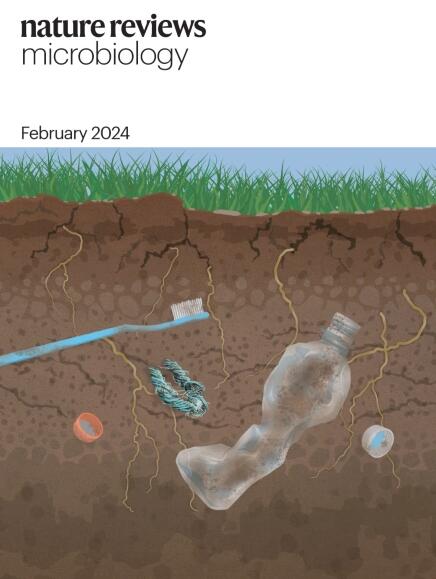细菌致病过程中的糖相互作用
IF 69.2
1区 生物学
Q1 MICROBIOLOGY
引用次数: 135
摘要
细菌病原体与其宿主之间的许多重要相互作用都是涉及宿主或病原体碳水化合物结构(聚糖)的高度特异性结合事件。聚糖相互作用可介导粘附、入侵和免疫逃避,并可充当毒素受体。一些细菌病原体还能通过酶促改变宿主聚糖来揭示结合目标、降解宿主细胞聚糖或改变宿主糖蛋白的功能。近年来,凝集素、聚糖和粘蛋白芯片等高通量筛选技术通过鉴定新的细菌-宿主糖相互作用改变了这一领域,这些糖相互作用对细菌的定植、存活和疾病至关重要。在本综述中,我们将讨论在细菌致病过程中涉及宿主和细菌聚糖的相互作用。我们还重点介绍了近期的技术进展,这些进展揭示了微生物致病的糖科学。在这篇综述中,詹宁斯及其同事讨论了在细菌致病过程中涉及宿主和细菌聚糖的相互作用。他们还重点介绍了阐明微生物致病机理的糖科学的最新技术进展。本文章由计算机程序翻译,如有差异,请以英文原文为准。

Glycointeractions in bacterial pathogenesis
Many important interactions between bacterial pathogens and their hosts are highly specific binding events that involve host or pathogen carbohydrate structures (glycans). Glycan interactions can mediate adhesion, invasion and immune evasion and can act as receptors for toxins. Several bacterial pathogens can also enzymatically alter host glycans to reveal binding targets, degrade the host cell glycans or alter the function of host glycoproteins. In recent years, high-throughput screening technologies, such as lectin, glycan and mucin microarrays, have transformed the field by identifying new bacterial–host glycointeractions, which are crucial for colonization, persistence and disease. In this Review, we discuss interactions involving both host and bacterial glycans that have a role in bacterial pathogenesis. We also highlight recent technological advances that have illuminated the glycoscience of microbial pathogenesis. In this Review, Jennings and colleagues discuss interactions involving host and bacterial glycans that have a role in bacterial pathogenesis. They also highlight recent technological advances that have illuminated the glycoscience of microbial pathogenesis.
求助全文
通过发布文献求助,成功后即可免费获取论文全文。
去求助
来源期刊

Nature Reviews Microbiology
生物-微生物学
CiteScore
74.00
自引率
0.50%
发文量
149
审稿时长
6-12 weeks
期刊介绍:
At Nature Reviews Microbiology, our goal is to become the leading source of reviews and commentaries for the scientific community we cater to. We are dedicated to publishing articles that are not only authoritative but also easily accessible, supplementing them with clear and concise figures, tables, and other visual aids. Our objective is to offer an unparalleled service to authors, referees, and readers, and we continuously strive to maximize the usefulness and impact of each article we publish. With a focus on Reviews, Perspectives, and Comments spanning the entire field of microbiology, our wide scope ensures that the work we feature reaches the widest possible audience.
 求助内容:
求助内容: 应助结果提醒方式:
应助结果提醒方式:


